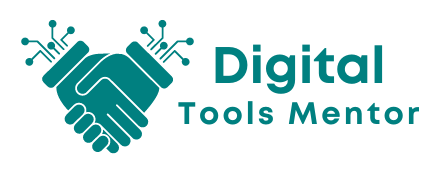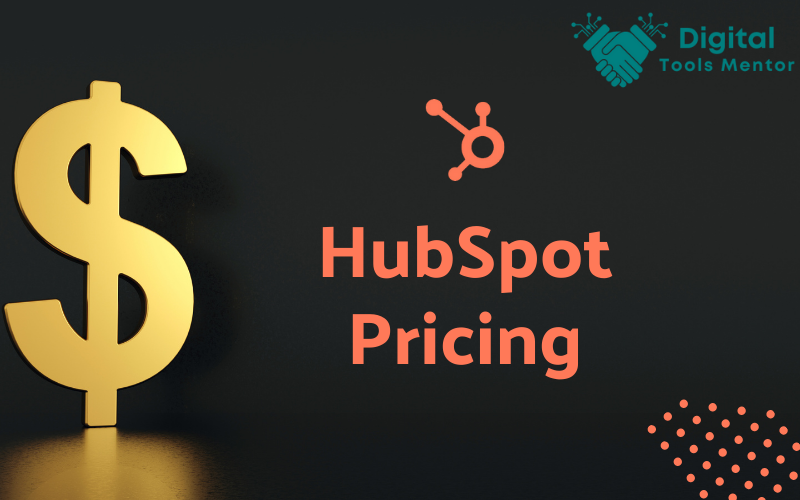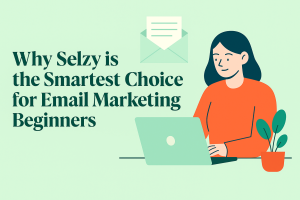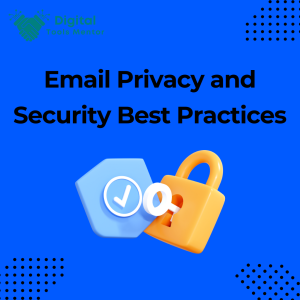Hubspot Pricing 2025: Which Plan Do You Need?
Navigating the myriad options for digital marketing solutions can be a daunting task for any business, large or small. When it comes to HubSpot, a leader in inbound marketing, sales, and service software, understanding HubSpot pricing is crucial to making an informed decision that aligns with your company’s needs and budget. In 2025, HubSpot continues to offer a versatile range of plans, each tailored to suit different business scales and objectives. Whether you’re a startup looking to capture leads or an established enterprise seeking to refine your customer experience, this blog post will demystify HubSpot’s pricing structure to help you pinpoint the plan that’s a perfect fit for your business strategy.
To gain even deeper insights and a user perspective on HubSpot’s offerings, don’t miss our comprehensive HubSpot Review 2025 blog post.
Hubspot Pricing Plans
The landscape of HubSpot’s pricing plan in 2025 remains a testament to their commitment to providing scalable solutions for businesses of all sizes. With a thoughtful stratification of features and tools, HubSpot ensures that whether you’re dipping your toes into inbound marketing or diving in deep, there’s a pricing tier that matches your intensity. From free tools designed to provide a solid foundation for startups, to premium packages brimming with advanced capabilities for market-leading enterprises, the structure of HubSpot’s pricing is as user-friendly as it is comprehensive. Each plan is thoughtfully crafted to address the evolving needs of businesses as they grow, ensuring that the transition between tiers is as seamless as it is rewarding.
1. Hubspot Free Tools
With HubSpot’s free tools, businesses can kick-start their email marketing efforts without upfront investment. Users can send up to 2,000 emails per month and gain access to basic email templates, making this a viable option for small-scale campaigns and those just beginning to build their email lists. The free CRM integrates seamlessly with these email services, allowing for simple contact management and tracking of email engagements.
2. Hubspot Starter Plan
Starts at $18/month
When you’re ready to ramp up your email marketing, HubSpot’s Starter Plan comes into play. Increasing the email send limit and offering more personalization options for your campaigns, the Starter Plan is designed for businesses seeing the value of targeted email marketing. This plan includes additional features like simple list segmentation, higher email send limits, and reporting tools to track the effectiveness of your campaigns.
3. Hubspot Professional Plan
Starts at $800/month
As your email marketing strategies become more sophisticated, the Professional Plan offers advanced tools necessary for scaling up. This includes everything in the Starter Plan with the addition of marketing automation, A/B testing, dynamic personalization, and more detailed reporting. The Professional Plan is aimed at businesses that need to automate and optimize their email marketing efforts to improve conversion rates and personalization at scale.
4. Hubspot Enterprise Plan
Starts at $3,600/month
For large-scale operations and marketers demanding the highest level of customization and control, the Enterprise Plan is HubSpot’s most comprehensive offering. Supporting a massive volume of emails, this plan introduces features such as predictive lead scoring to help prioritize email engagements and advanced segmentation capabilities. Additionally, it offers custom event triggers and reporting, access to a dedicated IP, and the ability to conduct extensive A/B testing on every element of your email campaign.
Hubspot Pros and Cons
Hubspot Pros
- Comprehensive CRM Platform: HubSpot provides an all-in-one platform for marketing, sales, customer service, and content management, which can be a significant advantage for businesses looking to streamline their operations.
- User-Friendly Interface: The platform is known for its intuitive design and ease of use, making it accessible for users of all skill levels.
- Free Plan Availability: HubSpot offers a robust set of free tools, which is great for small businesses or startups looking to get started without an initial investment.
- Scalability: With various pricing tiers, HubSpot’s services can grow with your business, ensuring you only pay for what you need at each stage of your growth.
- Integration Capabilities: HubSpot integrates with a vast array of other tools and platforms, enhancing its utility and flexibility.
- Marketing Automation: Even at mid-tier plans, users have access to powerful automation tools that can save time and improve efficiency.
- Educational Resources: HubSpot provides extensive learning resources, including HubSpot Academy, which helps users maximize the use of the platform.
Hubspot Cons
- Costly at Higher Tiers: As you move up to Professional and Enterprise plans, HubSpot can become quite expensive, which might not be justifiable for all businesses.
- Complexity with Advanced Features: Some users find the range of features overwhelming, and there is a steep learning curve to utilize the platform to its full potential.
- Limited Customization at Lower Tiers: The free and Starter plans have limitations on customization, which could be a drawback for businesses with more specific needs.
- Add-on Costs: Certain features and add-ons come with additional costs, which can add up quickly and increase the overall price significantly.
- Email Limits: Email marketing in lower-tier plans has sending limits which might not suffice for businesses with large contact lists or those who engage in frequent email campaigns.
- Inbound Marketing Focus: While HubSpot is excellent for inbound marketing, businesses that rely heavily on outbound marketing may find some features lacking.
- Data Migration and Implementation: Moving to HubSpot from another system can be complex and may require assistance, which can be a con for businesses without technical expertise.
Affordable Alternatives to Hubspot
1. GetResponse
As an affordable alternative to HubSpot, GetResponse offers a user-friendly email marketing platform that is especially suited to small and medium-sized businesses. It excels with features like autoresponders, advanced analytics, and A/B testing, which are accessible even at lower-tier pricing. GetResponse also includes marketing automation, webinar hosting, and landing pages, which can help users implement a comprehensive marketing strategy at a fraction of the cost of HubSpot, albeit with a narrower focus on email-centric activities.
2. Brevo (Previously known as Sendinblue)
Brevo (Sendinblue) is a powerful marketing tool that positions itself as a budget-friendly HubSpot alternative, offering a unique pay-as-you-go option, which is particularly advantageous for businesses with fluctuating email volume. Its suite includes email campaigns, transactional emails, SMS marketing, and marketing automation. With its intuitive user interface and no requirement for a long-term commitment, Brevo can be an excellent choice for startups and small businesses looking to scale their marketing efforts as needed.
3. MailerLite
MailerLite is another cost-effective alternative to HubSpot, targeting businesses and professionals who require simplicity alongside functionality. It offers a straightforward approach to email marketing with a clean design and an easy-to-use drag-and-drop editor. MailerLite’s free plan is quite generous, and even its premium offerings are competitively priced, making it a great option for budget-conscious users. While it may lack the depth of HubSpot’s CRM capabilities, its focus on user experience and essential features make it a strong contender for those prioritizing email campaigns and basic automation.
Bottomline: Which Hubspot Plan Suits Your Needs?
Selecting the optimal HubSpot package hinges on aligning the platform’s diverse pricing options with your company’s marketing demands and fiscal boundaries. If you’re at the helm of a startup or a small business, the Starter Plan is a cost-effective solution to fuel your initial customer engagement and management efforts. For those seeking a more dynamic suite of marketing automation, CRM sophistication, and analytics depth, the Professional Plan stands out as an investment that could seamlessly integrate with and elevate your digital marketing strategies. At the pinnacle, the Enterprise Plan offers expansive, top-tier functionalities tailored for substantial businesses aiming to leverage extensive customization, comprehensive inbound marketing campaigns, and data-driven decision-making. Making the right choice involves a careful assessment of where your business stands and how advanced your digital marketing toolkit needs to be to reach those conversion rate goals, ensuring your selection enhances your online presence and grows your customer base.
Final Thoughts on Hubspot Pricing
In conclusion, HubSpot’s pricing in 2025 continues to reflect its commitment to providing scalable, feature-rich solutions for businesses at every stage of growth. Whether you’re just stepping into the world of CRM and email marketing with the Free or Starter Plan, or you’re ready to harness the full power of marketing automation and analytics with the Professional or Enterprise Plan, HubSpot offers a tier that aligns with your business objectives and budget. Carefully consider your company’s size, marketing strategy sophistication, and resource allocation to make an informed decision. Remember, the right HubSpot plan is not just about the cost—it’s an investment in your business’s future, designed to adapt and grow with you in an ever-evolving digital landscape. Choose wisely to ensure that your marketing efforts are as efficient, impactful, and successful as they can possibly be.
Hubspot Pricing: FAQs
1. Is there a free version of HubSpot available?
Yes, HubSpot offers a completely free plan that includes basic CRM features, email marketing, and other essential tools suitable for small businesses or those just starting out.
2. How much does the HubSpot Starter Plan cost?
As of 2025, the HubSpot Starter Plan begins at $50 per month, which includes access to more comprehensive tools for growing businesses, with pricing that can increase based on the number of contacts you have.
3. What features are included in the HubSpot Professional Plan?
The Professional Plan includes advanced marketing automation, CRM tools, custom reporting, and more. It’s designed for businesses that need more sophisticated marketing and sales capabilities.
4. Can I purchase individual Hubs without buying the full suite?
Yes, HubSpot allows you to purchase their Marketing, Sales, Service, and CMS Hubs individually, so you can tailor the service to your specific needs.
5. Are there any hidden costs with HubSpot?
HubSpot is transparent about its base pricing, but additional costs can arise from extra features, add-ons, or a higher number of contacts than your plan allows.
6. Does HubSpot offer discounts for nonprofits or educational institutions?
Yes, HubSpot provides discounts for qualifying nonprofits and educational institutions. It’s best to contact their sales team for specific discount information.
7. What is the commitment period for HubSpot’s plans?
HubSpot offers both monthly and annual subscriptions, but you can often save on the total cost with an annual commitment.
8. Does HubSpot charge per user?
The free version does not charge per user. However, starting with the Starter Plan and above, there may be additional costs for adding more users to the account.
9. Is onboarding mandatory for the Professional and Enterprise plans, and how much does it cost?
Onboarding is strongly recommended by HubSpot for higher-tier plans to ensure you get the most out of the platform. The cost varies depending on the level of service and can be quite substantial, so check with HubSpot for current pricing.
10. How easy is it to upgrade or downgrade between HubSpot plans?
Upgrading between HubSpot plans is generally straightforward and can be done through your account settings. Downgrading can be more complex and often requires you to contact HubSpot’s support team.




